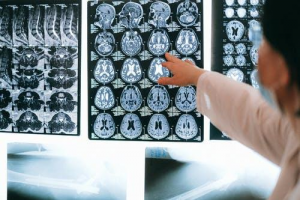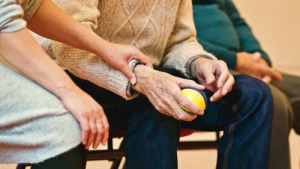
Although there’s no definitive treatment to cure Parkinson’s disease, doctors might recommend lifestyle modifications, supportive therapies, or medications based on your symptoms.
Stats show that more than 60,000 US citizens are diagnosed with Parkinson’s disease every year. Around 10 million people are currently living with initial or advanced stage PD worldwide. In addition, April is observed as “Parkinson’s Disease Awareness” month in which we strive to create awareness about this unforgiving medical condition.
Among many kinds of preventive or restorative treatments available for Parkinson’s, Deep Brain Stimulation (DBS) is considered one of the most effective ones.
This technique was first approved in 1997 to treat Parkinson’s tremors and advancing symptoms. With technological advancements, in 2016, DBS was approved for treating early Parkinson’s stages. Our spinal and neurosurgeons prescribe and perform DBS on patients with five years or more history of motor and memory symptoms associated with Parkinson’s.
Let’s get to know more about deep brain stimulation and its impact on Parkinson’s disease patients.
How Does Deep Brain Stimulation Work?
Spine and brain physicians recommend deep brain stimulation to PD patients experiencing motor symptoms such as stiffness, speech changes, or tremors. This technique works best for limiting mobility constraints and imbalances, including walking and gait difficulties.
It’s important to note that DBS isn’t recommended for dementia or memory loss patients who don’t have mobility issues.
Three Components of Deep Brain Stimulation Therapy
During deep brain stimulation therapy, your doctor performs three main steps:

- A small incision is created in the skin throughwhich an electrode is inserted. This electrode is a thin, insulated wire that targets the affected brain area.
- The electrode is connected to a neurotransmitter.
- The battery packis connected with a neurotransmitter, planted under the skin, usually near the collarbone, lower abdomen, or chest.
Effects of Deep Brain Stimulation on Parkinson’s disease Patients
Studies show that DBS has a positive impact on people suffering from PD. It helps in alleviating mobility issues and enhances the patient’s quality of life. Moreover, many patients are also able to reduce their medical interventions in the first few months after treatment.
One excellent and noteworthy benefit of DBS is that it increases the time period when PD patients are at their best state without any signs of troublesome dyskinesia, or impairment of voluntary movement.
Signs Indicating that You’re a Suitable Candidate for DBS
Deep brain stimulation isn’t suitable for every patient who suffers from Parkinson’s disease. Here are the common signs and symptoms that may lead a physician to recommend DBS treatment.
- Parkinson’s disease symptoms lingering for five years or more
- You experienceintermittent memory loss issues
- Your symptoms worsen sometimes despite regular medical administration
- You’re suffering from dyskinesia
- Medications have adverse side effectson your health
- Parkinson’s disease symptoms are affecting your daily routine and activities.
Schedule an Appointment with Qualified Deep Brain Stimulator Surgeon in Nevada
As a leading brain, spine, and pain management service provider, Sierra Neurosurgery offers qualified and experienced spine specialists in Reno. Our expansive range of services includes minimally invasive spine surgery, neuro-oncology, brain tumor treatment, X-ray and MRI imaging services, pituitary tumor surgeries, and more.
Learn more about our neurosurgery or pain management treatments or schedule an appointment with an expert deep brain stimulator surgeon today!
